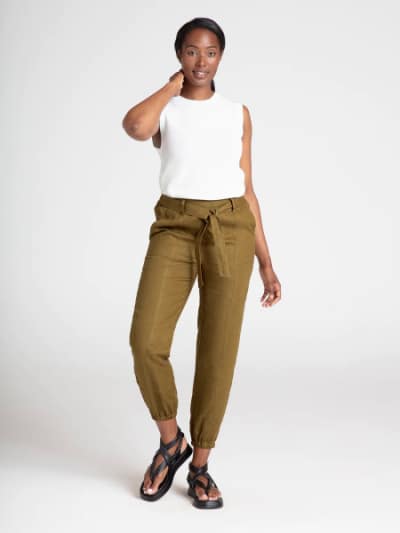Excellent Facts For Selecting Hemp Clothing
Wiki Article
Why Is Hemp More Biodegradable And Durable, And Regenerable Than Cotton For Example?
Hemp is thought to be more biodegradable due its inherent qualities and the method in which hemp is grown. Here's why- Biodegradability-
Natural Fibers - Hemp, plant-based, natural fiber, is biodegradable. Textiles and clothing made from hemp naturally decompose after being thrown away. They return to the earth, without leaving permanent residue. Contrast this with synthetic fibers, like polyester which can require many years to decompose.
Hemp textiles are free of chemical additives and synthetic chemicals that can hinder biodegradability. They can be treated with synthetic chemical additives, such as specific dyes or finishings which can slow biodegradation.
Durability-
Hemp fibers have earned a reputation for their strength and durability. Hemp textiles and clothing are less prone to wear and tear which makes them more durable when compared to other cotton products. That means hemp clothes will last longer, even before it starts to show indications of wear and wear and tear.
Less Prone to Pillingless prone to pilling Hemp fabrics are less susceptible to pilling (the formation of tiny fuzzy balls on the surface of the fabric) as compared to cotton. This attribute contributes their longevity and high-quality.
Regenerative Agriculture-
Soil Health Hemp cultivation can be regenerative if carried out sustainably. Hemp has an extensive root structure that prevents soil erosion and compaction. It also can improve soil health, by increasing the aeration and the activity of microbial organisms. This regenerative element can help the soil be more suited for future crop production.
Low environmental impact Sustainable hemp farming practices make use of fewer herbicides and pesticides which minimizes the damage to the environment. Contrary to conventional cotton farming can lead to degrading soils and water pollution due to its reliance on synthetic chemicals.
Water Efficiency-
Hemp generally requires less water to grow than cotton. Hemp's drought-resistant nature permits it to thrive in low-water conditions or with rain. This makes it a efficient choice for water, particularly in areas that have limited water resources.
Hemp is an excellent crop to incorporate into rotational systems. It will help improve the health of soil as well as decrease the risk of developing diseases and soil depletion. In the cotton industry, the practice of rotating crops is much less common.
Hemp is a flexible material that can be applied to many different products, such as building materials clothing, textiles and paper. This versatility implies that hemp cultivation could be used to support a variety of industries using sustainable and regenerative practices.
Although hemp has these benefits, it is equally important to understand that both hemp and cotton can be produced sustainable or not, based on the practices of farming and processing methods used. Choosing hemp products that are made using ethical and sustainable practices can maximize its environmental benefits. Similarly, selecting organic cotton products can reduce the environmental issues that are associated with traditional cotton production. Have a look at the most popular read more here about hemp clothes for blog tips including patagonia hemp work pants, hemp pants womens, hemp fabric, hemp jeans mens, hemp tees wholesale, hemp sweater, hemp pants mens, patagonia hemp shorts, organic hemp hoodie, hemp boxer shorts and more.

What Are The Benefits Of Hemp Fibers With Carbon Sequestration, Sustainability And Crop Rotation?
Hemp fibers are an environmentally-friendly choice for both agricultural and textile production. They are beneficial for carbon sequestration and sustainability.
Hemp has a rapid growth rate. It matures between 70 to 120 days, based on the type of hemp and the conditions under which it grows. Hemp plants absorb atmospheric carbon dioxide (CO2) in their rapid growth stage as part of their photosynthesis process. The process of carbon absorption is able to dramatically reduce the amount of CO2 by storing it.
Hemp produces a lot of biomass. The tall stalks as well as the thick leaves produce a large amount of organic material. If the biomass is put into soil or used in various applications, it can contribute towards the growth of organic matter and carbon.
Sustainability:
Hemp needs less synthetic pesticides, herbicides, and herbicides than many other crops like cotton. The natural resistance of hemp to a variety of diseases, pests and weeds minimizes the need of chemical intervention. Organic hemp farming, particularly promotes sustainable farming by avoiding synthetic chemicals.
Hemp is fairly water efficient, and can grow with little irrigation. This makes it a more sustainable plant in regions that have limited water resources. It is therefore more sustainable for regions with limited water resources.
The hemp's deep root system enhances the health of soil. The roots of Hemp can prevent erosion by stabilizing soil structure and decreasing runoff. Hemp cultivation also improves soil fertility by enhancing microbial soil activity.
Hemp can be used in the rotation of crops. Crop rotation refers to the process of alternating between different crops on the same field. This practice is a great way to interrupt the cycle of pests and improve the quality of soil and reduce soil depletion. Hemp is an excellent crop to rotate and its use can contribute to sustainable farming.
Crop Rotation
Diversification- Hemp can be incorporated in crop rotation systems along with other crops like legumes, vegetables, grains or grains. Diversification is crucial to maintain soil health, reducing the chance of pests or diseases that are specific to particular crops, as well as helping to ensure a balanced cycle of nutrients.
The hemp's deep roots allows it to penetrate soil to aerate and reduce compaction, while increasing water infiltration. The improved soil structure is an advantage for crops that follow following hemp.
In short hemp fibers can improve carbon sequestration, sustainability, and crop rotation practices through their rapid expansion, biomass production with minimal chemicals, water efficiency, positive effect on soil health, and their compatibility with crop rotation systems. The above characteristics make hemp cultivation an environmentally sustainable and regenerative agriculture practice. Furthermore, the hemp fibers that result are an eco-friendly option for textiles and other uses. Read the most popular hemp clothing for more tips including hemp shorts, hemp shorts patagonia, hemp coat, hemp yoga clothes, t shirt hemp, jungmaven clothing, hemp golf shirts, hemp sweatpants, patagonia hemp shorts, hemp sweatshirt and more.

What Are The Benefits That Bamboo Clothing Has To The Environment And For Comfort?
Bamboo clothing offers several advantages for both environmental sustainability and comfort.
The softness of bamboo is well-known for being exceptionally soft. It has a silky smooth texture that feels good against the skin. A lot of people find bamboo clothing extremely soft, making it a popular choice for intimate apparel as well as loungewear and activewear.
Breathability Bamboo fibers naturally breathable and moisture wicking. Micro-gaps facilitate air circulation, which helps keep your body cool during hot weather. The properties that wick moisture away from the fabric aid in removing sweat from your skin. This can reduce the sensation that your clothes are damp.
Bamboo clothing is great for thermoregulation. Bamboo clothing can help keep your body warm in colder temperatures by capturing warmth near your body. It also helps to remain cool during summer heat because it lets excess heat and moisture escape. Bamboo clothing is appropriate to wear all year round because it is adaptable to different temperatures.
Hypoallergenic- Bamboo fabric is hypoallergenic and soft on sensitive skin. It's less likely to cause skin irritation or allergic reactions.
Bamboo fibers are able to resist to odors because of their antimicrobial properties. This is a factor that contributes to the freshness of bamboo clothes even in physical activity.
Environment-
Sustainability- The bamboo plant is a renewable, sustainable resource. It is one of the fastest growing plants and requires minimal water. It doesn't require herbicides, pesticides or any other chemical are needed for its cultivation. Bamboo can be grown from roots, making it possible to harvest without harming the plant.
Low water usage- Bamboo is inherently water-efficient. It can thrive with minimal irrigation, and is often grown using rainwater alone which reduces the environmental impact associated with water usage in agriculture.
Biodegradability Bamboo clothing naturally decomposes when it is removed. This feature helps to reduce the quantity of non-biodegradable fabric material that ends up in landfills.
Carbon Sequestration. Bamboo is a great plant to sequester CO2 during its rapid growth. Bamboo cultivation acts as an absorber of carbon dioxide which reduces levels of greenhouse gases, and also helping to reduce climate change.
Chemical Reduction - The manufacturing and processing of bamboo fabrics typically requires fewer chemicals than other types of textiles. This reduces the environmental impact that manufacturing textiles produces.
Closed Loop Production Some bamboo fabrics are made using closed loop systems that make use of recycled chemicals and water, minimising the amount of waste.
It is important to remember that the environmental impact of bamboo clothing can vary depending on the specific manufacturing process and whether the bamboo utilized in the process is made from sustainable and sustainably managed bamboo forests. Bamboo clothing made using environmentally friendly practices will give the greatest environmental benefit. Have a look at the top rated bamboo clothes url for website examples including bamboo newborn clothes, bamboo viscose pajamas, bamboo tee shirts women, bamboo clothing wholesale, bamboo pants for women, mens boxer shorts bamboo, bamboo boxer shorts for men, bamboo dress shirt, bamboo fishing shirts, bamboo yoga trousers and more.
